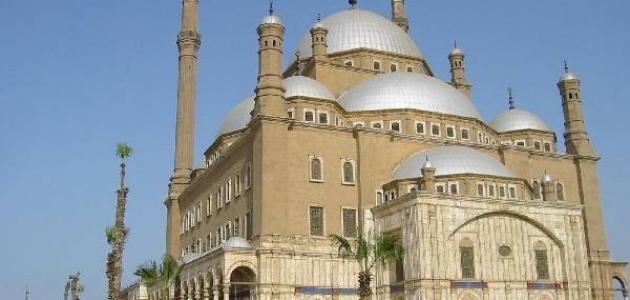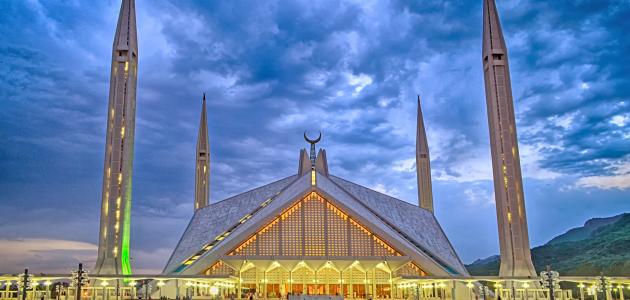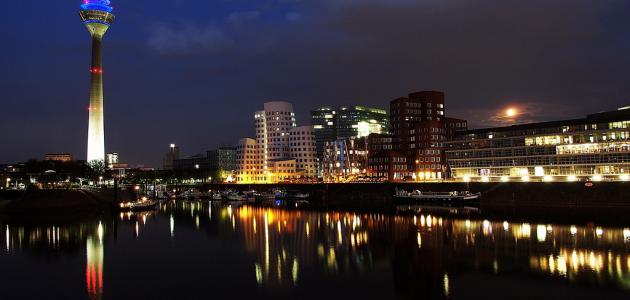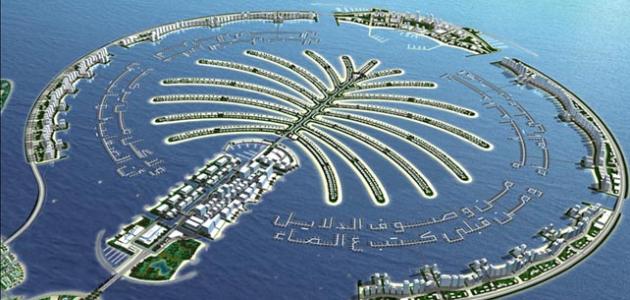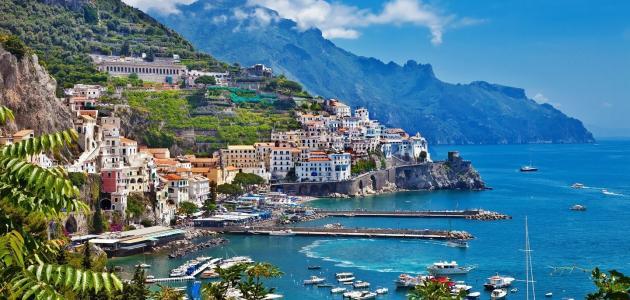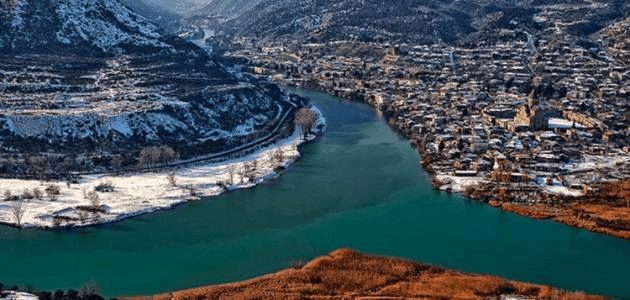Table of Contents
About Lebanon
Officially, it is the Republic of Lebanon and its capital is Beirut. Lebanon is located on the eastern coast of the Mediterranean, and its area is 10,425 square kilometers distributed between the coast in the west and mountain ranges in the east, while the area between the mountains of Lebanon and the mountain range on the Syrian border is called the Bekaa Valley, which is characterized by its fertile lands And Lebanon is considered to have a Mediterranean climate characterized by a mild, rainy winter with a long warm summer. Average temperatures in the capital Beirut are 14 ° C in the winter and 32 ° C in the summer. In the mountains, temperatures are cooler than Beirut in the summer and are characterized by falling For a winter which may remain on throughout the year.
Tourism in Lebanon
Lebanon is characterized by many archaeological and natural tourist attractions that exist on its territory, as well as what it contains of a tourist culture that extends throughout history. Many European orientalists such as Avones de Lamartine, Ernest Renan and Victor Green have contributed to highlighting the Lebanese culture in the Levant through their visits to this country Tourism in Lebanon is one of the most important financial revenues of the state, and it is also heavily dependent on Lebanese expatriates who return to spend their holidays inside the country’s land during the summer.
The Lebanese monuments are varied in a way that reflects the history of the ancient and modern world. They contain many Romen temples, Phoenician cities, Crusader castles, Ottoman baths, Mamluk mosques and old churches, in addition to the natural features such as the beautiful beaches located on the Mediterranean Sea in addition to caves made of limestone Lebanese cuisine is considered one of the most famous international kitchens, and it is considered one of the most Arab countries in which winter sports can be practiced such as skiing, through many mountain ski resorts. Lebanon is also famous for life A prosperous and active during the night.
Cultural and recreational tourism
Lebanon is characterized by the presence of many cultural and archaeological attractions that span various parts of its territory, including the following:
Baalbek ruins
The ruins of the Lebanese city of Baalbek are considered one of the most important historical landmarks and archaeological treasures of Lebanon. Since the year 9000 BC, Baalbek was one of the places on which many different ancient civilizations were built, as it was considered a holy land for many religions such as Christianity, Islam, and various civilizations such as Romen and Mesopotamian civilization Each of these civilizations and religions contributed to adding their own heritage touches to the city. In the period before 150 BC, Baalbek contained temples for the Phoenicians such as those in which the gods of war and fertility were sanctified Astarte (in English: Astarte), then these temples were used to practice religious rituals during the era of Romen colonialism, then they were used for the same goal during the Christian era that ended in the year 637 AD to be used as an impenetrable fortress during the period of Islamic rule in which a mosque was added to these historical monuments, and remained The ruins of Baalbek are the focus of great attention to this day, as many festivals, celebrations and various folklore activities are held, making it a landmark that attracts many local and foreign visitors alike.
The temples that were constructed in the city of Baalbek, such as the Temple of Bacchus, the Temple of Venus, and the Temple of Jupiter are evidence of the greatness of architecture and marvelous capabilities in the art of building that existed in the city of Baalbek, as some of these temples are considered an architectural mystery that has always confused archaeologists, through their impotence On the interpretation of the capabilities that led to the carving of these temples and structures and the construction of their tall and high-rise columns, the Temple of Jupiter is surrounded by columns of up to 54 columns, and the length of each of them is approximately 23 meters, making it one of the largest historical pillars in the world. The history of its construction dates back to the Romen era, which is adorned with beautiful sculptures from the temples that have remained and preserved construction in our time, and the temple of Bacchus is called the small temple, this temple is dwarf in comparison with the temple of Jupiter, and the name of the small temple does not indicate that this temple is Indeed, the Temple of Bacchus is 69 meters long and 36 meters wide, and the entrance height is eleven meters. This entrance is surrounded by two small gates leading to the rooms on the second floor of the temple, and this temple is characterized by its wonderful Baroque motifs dating back to the century The second one The birth of Christ, as well as many statues each indicating those cities that contributed to the financing of the construction of the Temple of Bacchus, and some see that this temple was created to honor what was known as the gods of wine.
National Museum of Beirut
The National Museum of Beirut is a comprehensive place that contains many monuments that embody the succession of civilizations and the great cultural heritage of the State of Lebanon, this comprehensive museum contains many gilded statues that were found in the Byblos region where they were buried near the obelisk temple in that region, and also contains The museum contains some of the antiquities that were found in the city of Sidon, as well as a set of three-dimensional sarcophagi from the Phoenician era, and the museum also contains among its walls a distinguished collection of artifacts dating back to the Bronze Age era, such as Egyptian shields made of gold, and th Duke made of gold and obsidian stone, in addition to a drinking bowl that was made in the form of a pig’s head, and golden shields that are found within what is known as the royal cemetery, in addition to a distinguished collection of ancient glass from the Phoenician era, and the museum contains on its ground floor some mosaic paintings The Byzantine era as well as two carved coffins, one of which represents the Achilles legend, while the second refers to the depiction of the God of Love Cupid as drunk, and many other statues and statues such as the Phoenician statues that were formed as a thank-you for what It is known as the god of healing or the one that represents the Romen era as the head carved from marble, which represents the head of the god Bacchus.
The presence of civilizational features that demonstrate the history of this country is not limited to museums alone, but extends to official festivals that attract major international artists and musicians throughout the year, where archaeological and historical sites such as Baalbek, Jbeil and Beiteddine are nominated to attract these summer festivals and the crowds that attract them, in The time when the streets of villages and the rest of the cities are not free from the manifestations of simple popular celebrations that are held on religious and other occasions as a way to express this vibrant country.
Lebanon stands up to the modernity experienced by the current world by preserving handicrafts that extended with the history of this ancient country ten thousand years ago, while credit may be due to these craftsmen in his mountains, and handicrafts have varied to include the manufacture of clothing embroidered with threads of gold and silver, Fine Phoenician fabrics, jewelry making, bronze Crusader bells, as well as ceramics, knives and leather.
Natural tourism in Lebanon
Lebanon contains many natural tourism sites, among which are the following:
Jeita Grotto
Jeita Grotto is considered one of the natural caves within the Lebanese Keserwan region. This cave was discovered by an American missionary in the year 1836 AD, where he entered a distance of 50 meters inside the cave, then he fired from his rifle, which It led to his discovery of a cave of great importance, and the Jeita Tourist Site contains many factors that made it one of the most important natural tourism areas throughout the world. This tourist site was able to combine green environment, trees, clean air, water, flowers and animals in addition to these technical touches. J it has brought the Lebanese heritage site.
Al-Shouf Cedar Reserve
Cedar forests in Lebanon formed a historical heritage written according to the oldest historical records dating back to the third millennium BC, and the oldest documented forests throughout history, and one of the largest protected mountain areas in the Middle East, and is considered the Al-Shouf Cedar Nature Reserve. Reserve) is one of the natural reserves that are under the management of the Ministry of Environment in the State of Lebanon, and this reserve was declared as the Biosphere Reserve by UNESCO in the year 2005, and this nature reserve extends over large areas, it covers the equivalent of five percent of the total area of Lebanon, What The lands of this natural reserve, which covers an area of about 500 km2 (50,000 hectares), contain a quarter of the remaining cedar forest in Lebanon, as well as many trees that are old, as some of them are estimated to be about two thousand years old.
The Al-Shouf Cedar Reserve is located at an altitude between approximately 1,000 to 2,000 meters. The Baroque mountain consists entirely of cavernous limestone stones, in addition to many ground cavities that indicate the cave forms inherent in the mountain. Rainwater is distributed in the Al-Shouf Cedar Reserve area where it is stored Part of it is in the form of ground water, while the other part flows in the form of surface water from which the rivers are considered the main source of irrigation in this reserve, as well as it is a source of many villages in the Chouf and Western Bekaa regions.
Rain and snow fall during the cold season in the Chouf Cedar Nature Reserve, while summer is accompanied by droughts and extreme temperatures, in addition to the biological diversity of the protected areas, it is also characterized by the diversity of animal and plant wealth found on them, as it contains many endangered plants and some Rare species, and species that are limited to the Middle East, or Eastern Mediterranean, and are also home to many large mammals, such as wolves, wild cats, and wild boars, and many types of birds that may exceed 290 species, and more than 3 1 type of different reptiles.
Patar george waterfall
Baatara Gorge Waterfall, or the so-called cave of the three bridges, represents a wonderful formation of rocks, which is located near the city of Batroun in northern Lebanon, and is characterized by its surrounding nature, and the perfect view, which made it one of the places that he preferred to visit, It is worth noting that this waterfall was discovered in the year 1953 AD.
Rural tourism
Rural tourism in its sense is considered the opposite of classic tourism in which the visitor refers to urban areas with modern urban aspects and high population density, so tourists of this kind wish to go to the countryside and villages to achieve a real interactive experience with their local residents, amid the many forms of aesthetic nature that provide a comfortable and calm environment Filled with habitats, sightseeing, and experience, tourists are seen, while practicing this type of tourism, mingling with the residents of these areas and practicing with them many activities such as agriculture, harvesting, singing, and sometimes making their traditional foods. In addition to attending local festivals, visiting religious sites and factories, horseback riding, fishing and other matters that ensure the visitor direct interaction with the residents and valuable real experiences.
Religious tourism
Lebanon has the advantage of having a varied religious cultural heritage. This country has over the years been a place for the growth of two of the largest and most popular religions in the world, namely Islam and Christianity, which is reflected in making Lebanese society rich in religious beliefs and cultural pluralism, while some of the religious tourist attractions come In Lebanon:
- Our Lady of Lebanon Cathedral: This cathedral is located on the Harissa plateau that overlooks the Bay of Jounieh. This Christian cathedral has been built in honor of the Virgin Mary, and this cathedral contains a statue that embodies the Virgin. It was built in the year 1908 AD on a base From the cement, this high statue that is at the top of the building is reached through a staircase, and Christian religious rituals such as prayer and marriage ceremonies are established within this cathedral, and the historical cathedral contains a modern one with its side in which Pope John Paul II hosted his Mass during his visit to Lebanon in In the year 1997 AD, The number of pilgrims doubles this holy place during the month of May, which is the month dedicated to the Virgin Mary.
- Al-Omari Grand Mosque: Parts of this mosque were built on the remains of a Crusader castle, and the history of the construction of this mosque in Sidon dates back to the end of the thirteenth century, and the Ottomans built the minaret of the mosque in the nineteenth century, but this religious teacher displayed Because of the many damages caused by the Israeli bombing of Lebanon in the year 1982 AD, the mosque was restored and restored with a generous donation by a Lebanese expatriate in France, so the walls, domes and sidewalks were rebuilt and the minaret was reinforced with iron and many other restoration works supervised by many architects and studentsThe Lebanese.
- Monastery of Mar Maroun Annaya: This monastery is a shrine for the burial place of the Lebanese Saint Mar Charbel, who was born in the year 1882AD and died in 1875 AD, and the monastery is one of the holy places for the Christian religion, and it was built in the year 1965 AD in honor of Saint Charbel, who was Announced as a saint in the year 1977 AD, the monastery consists of a simple building that contains a statue of the hand of Saint Charbel in the outer square. The monastery also contains a small museum, while the small church remains constantly lit to receive worshipers.
- Great Mosque: The Great Mosque is located in the Lebanese city of Tripoli. It was built on a site that was previously a Crusader cathedral built in the twelfth century. The bell of this cathedral has been converted into a minaret for this mosque, and it contains a prayer hall covered with domes. It also contains a distinct entrance.
- St. George Greek Orthodox Cathedral: This cathedral is based on the remains of the Church of the Resurrection, which dates back to the first century AD and the remains of a school close to the church. The capital, Beirut, is the location of this church, which is one of the most beautiful and oldest churches in the city, as it is, as some documents indicate It was built in the year 1808 AD, and was formerly called the Church of Saint George, and this cathedral has undergone many restoration and maintenance operations, some of which were carried out randomly, such as the renovations and expansion operations that occurred during the reign of King Novitus in 1715 AD, then this church was restored for a period Three consecutive years (176 4 -1767 AD) After being affected by an earthquake in 1759 AD, and after the completion of its restoration in 1767 AD its roof collapsed during the celebration of a mass and resulted in the death of 90 people, and in 1772 AD the church was restored, including the three massacres in it, and the renewal process continued over the following centuries It was decorated with wooden decorations and gilded symbols, then mural paintings were added to decorate its walls and ceiling, and the war that occurred in the years 1975 to 1990 AD resulted in the theft of church furniture and many of its holdings as well as the damage suffered by the wall paintings and gypsum works due to exposure to various climate factors, and in The year 1995 AD started A new phase of restoration by order of the Archbishop Archbishop of Beirut.
- Tanning Mosque: The Al-Dabbaghah Mosque located in the capital Beirut is known as Abu Bakr Al Siddiq Mosque, and the traveler Sheikh Abdul Ghani Al Nabulsi indicates that this mosque is also known as the Al Bahar Mosque because of its proximity to the Lebanese coast, and this mosque can be reached via the stairs as it is distinguished With its high location, the mosque in Tabaqa Al-Lower contains warehouses. The Al-Dabbagh Mosque was damaged during the Lebanese war that occurred in the years 1975 to 1990 AD. It is worth noting that it was named the Al-Dabbagh Mosque because it is located near a neighborhood dedicated to the tanning profession.
Educational tourism
Lebanon contains many educational and cultural edifices, some of which belong to the government sector, such as the National University of Lebanon, which was established in the year 1953 AD, while others are considered private educational institutions. The following are some of the educational edifices that exist across the state of Lebanon:
- American University of Beirut: The American University of Beiru is located in the capital Beirut, and is among a forest rich in biodiversity. This university, which was established in the year 1866 AD, contains many scientific disciplines such as pharmacy, engineering, medical sciences, humanities, health and agriculture.
- Saint Joseph University: St. Joseph University, the university is on the road to Damascus, and contains its own hospital, and St. Joseph University is the first higher education institution of the Catholic institution.
- Higher Business School: The Higher Business School, a school that gives its students the opportunity to continue their higher education in the style of some French schools, was established by order of Saint John as a hospital, and this college is located within a historic building dating back to the nineteenth century.
- Lebanese American University: (English: Lebanese-American University), transformed into a university edifice in the year 1992 AD, and it was known as Beirut University Institute.
- Beirut arabic University: The Arab University of Beirut, which is one of the private universities that was established by the Charity and Charity Association in the year 1960 AD, and is considered one of the cultural centers in Lebanon, and the university took it upon itself and from its foundation to provide Lebanon and the Arab nation with specialized cadres in many fields .
The most important tourist cities in Lebanon
Beirut city
When talking about the meeting between the East and the West, there is no doubt that Beirut is the place, as its friendly atmosphere rich in movement, and keeping pace with international fashion lines makes it an indefatigable place, which may urge some tourists to spend most of their time in it, to enjoy the tourist attractions mentioned thereof. :
- Martyrs’ Square: The Martyrs Square is one of the most important tourist attractions in Beirut, especially the bronze statue that was built in the flag of 1965 AD to commemorate the Lebanese patriots who revolted against the Ottoman rule in 1916 AD.
- Beirut Markets: Beirut markets cover an entire neighborhood of the city center, and the market was restored after the devastation caused by the civil conflicts by architect Rafael Mono, the award-winning Blitzker, and these markets contain shops for the most famous international brands, making it a major destination for shopping lovers.
- The Grand Serail: It is a huge building built in the Ottoman era, and today, with an area of 39,700 square meters, is considered a headquarters for the Prime Minister, and although access to it is difficult due to the sensitivity of its location, this does not prevent the beholder from seeing the front of the serail decorated with arches that extend over 80 meters.
- Al-Tayeb Market: Al-Tayeb Market was established in 2004 as a market for displaying organic agricultural products, where farmers meet weekly on Saturday to show their products from dairy products, juices and jams. The market also aims to support small Lebanese farmers, bring communities together and display their local foods and traditions. The market also contains a restaurant “Table “Who serves homemade food prepared by the residents.”
- St. George’s Cathedral: The cathedral is located in the Parliament Square and above the ruins of the ancient Romenian Law School, where the cathedral was built in the same location as the old churches and medieval churches, while the current building was built in the eighteenth century, making it the oldest church in the city, and it is worth noting that the church that today contains a museum under it It was reopened in 2003 AD after restoration and excavation of ancient churches.
- Hamra Street: يعتبر هذا الشارع الذي سُمي بإليزيه المدينة -نسبة إلى شارع باريس الشهير-، مركز النشاط الفكري لبيروت في ستينيات القرن الماضي، ويعتبر شارع الحمراء عامل جذب كبير للسياح والسكان على حد سواء بما يحتوي عليه من محلات بيع للكتب، وثلاث جامعات عريقة منها الجامعة الأمريكية.
- Star Square: تقع ساحة النجمة في قلب المدينة، وتضمُّ مقر البرلمان وكاتدرائيتين ومتحفاً، وتعتبر هذه الساحة أحد مراكز النشاط في بيروت، حيث يمكن للزائر الجلوس والنظر إلى ساعة الروليكس المنصوبة فيها منذ ثلاثينيات القرن الماضي بينما يتناول الطعام أو يشرب القهوة.
- Raouche Rock: تقع هذه الأعجوبة الطبيعية في البحر إلى جانب كورنيش الروشة، فيما تُعتبر صخرة الروشة من الدلائل على وجود الإنسان القديم في هذه المنطقة.
- Beiteddine Palace: يحتوي هذا البناء المميّز على متحف، بالإضافة إلى أنّه مكان يقام فيه مهرجان موسيقي سنوي، وقد بدأ بناء القصر عام 1788 واستغرق 30 عاماً لإنهائه.
مدينة طرابلس
تُعدّ مدينة طرابلس (بالإنجليزية: Tripoli) ثاني أكبر المُدن اللبنانية بعد العاصمة بيروت، وتُعرف بعاصمة الشمال للدولة اللبنانية، فهي تبعد عن بيروت مسافة 85 كم إلى الشمال، ويبلغ عدد السكان فيها أكثر من نصف مليون نسمة، وتمتاز طرابلس بعدد كبير من المعالم التاريخية الموجودة فيها، فهي تحتوي على ما يقارب أربعين معلماً تاريخياً يعود أغلبها إلى فترة القرن الرابع عشر الميلادي، وتتنوع هذه المعالم ما بين المساجد والمدارس الدينية والخانات والحمامات العامة والأسواق القديمة التي تعجّ ببائعي الحليّ والعطور والدباغين ومُصنعي الصابون والخياطين وغيرهم من أصحاب المهن الأخرى، وفيما يلي بعض من أشهر المعالم الأثرية والتاريخية في مدينة طرابلس:
- Great Mosque: (بالإنجليزية: The Great Mosque) تم بناء هذا المسجد على بقايا كنيسة سيدة البرج التي يعود تاريخها إلى القرن الثاني عشر، وتم تحويل قبة جرس الكنيسة التي تعكس فن العمارة الغربية إلى مئذنة، ويعود تاريخ بناء المسجد الكبير إلى الفترة ما بين عامَي 1294م و1315م، ويتكوّن المسجد من قاعة صلاة ذات أقواس وقباب كما يحتوي على ساحة كبيرة تحيط بها أروقة تؤدي إلى قاعة الصلاة، ويحتوي المسجد على لوحات تحتوي على معلومات عن المسجد وتفاصيل نمط الحياة فيه خلال فترة الحكم المملوكي.
- خان الصابون: (بالإنجليزية: Soap Khan)، وهو إحدى الخانات التي يتم من خلالها بيع الصابون في وقتنا الحالي، ويعود تاريخ هذه الخان إلى القرن السابع عشر، ويسود على هذا المبنى التراثي الطراز الكلاسيكي للخانات.
- خان الخيّاطين: (بالإنجليزية: Tailors Khan)، وهو عبارة عن مبنى يضم متاجر وصالات عرض وممر طويل ومسقوف، ويعود تاريخ بناء هذا المبنى إلى النصف الأول من القرن الرابع عشر حيث تم تشييده على بقايا مبنى قديم.
- خان المصريّين: (بالإنجليزية: Caravansary of the Egyptians)، وهو عبارة عن مبنى تم إنشاؤه تبعاً للطريقة الكلاسيكية في بناء الخانات، فهو يتكون من ساحة مفتوحة تحتوي على نافورة ماء بالإضافة إلى عدد من المتاجر التي تحيط بها، كما يحتوي خان المصريين في طابقه الثاني على صالات للعرض، ويعود تاريخ بناء هذا الخان إلى النصف الأول من القرن الرابع عشر.
- مسجد طينال: (بالإنجليزية: Taynal Mosque)، وهو مسجد تم إنشاؤه على موقع إحدى الكنائس الصليبية، بأمر من الأمير سيف الدين طينال في العام 1336م، ويتكوّن المسجد من قاعتَي صلاة تمّ دفن الأمير بجوار الثانية منهما، ويفصل بين القاعتَين باب أثري يعكس فن الإبداع الزخرفي الذي كان موجوداً في عصر المماليك، وقد تمّ الحفاظ على بعض من بقايا الكنيسة القديمة كالأعمدة الرخامية التي تعود للعصر الروماني.
- سوق الحراج: (بالإنجليزية: Souk Al-Haraj)، وهو سوق قديم ذو سقف مقبب مرفوع على أعمدة من الجرانيت، وهو سوق خاص بالمُنجدين يعود تاريخ بناؤه إلى القرن الرابع عشر.
- برج السباع: (بالإنجليزية: Tower of the Lions)، وهو برج بناه الأمير جلبان في منتصف القرن الخامس عشر، وتعود تسميته ببرج السباع نسبة إلى مدخله الذي يحتوي على أسود منحوتة، وهو من المباني التي حافظت على هيكلها إلى اليوم.
- قلعة سان جيل: (بالإنجليزية: The Citadel of St. Giles)، وسُمِّيت بهذا الاسم نسبة إلى الكونت ريمون دي سان جيل الذي قام ببناءها لتكون بعرض 70 متراً وطول 140 متراً، وقد شهدت القلعة العديد من أعمال الترميم والصيانة عبر العهود المختلفة، فتم ترميمها خلال حكم المماليك ثم خلال حقبة الحكم العثماني ثم قام بربر آغا حاكم طرابلس بترميمها مرة أخرى لتتخذ الشكل الذي عليه الآن، وتمتاز هذه القلعة بإطلال أسوارها على المدينة القديمة وعلى ضفاف نهر أبو علي، فضلاً عن فنّها الهندسي المعماري الذي يجمع بين أنواع وأشكال مختلفة من أنواع الفنون المعمارية التي تبدأ منذ عصر الفاطميين في القرن الحادي عشر وتمر بالصليبيين والمماليك وتنتهي بفن العثمانيين في التشييد والبناء.
- المدرسة القرطاوية: (بالإنجليزية: Madrassat Al-Qartawiyat)، تم بناء هذه المدرسة في العام 1326م من قِبل الأمير قرطاي، وتحتوي على لوحات رخامية عند مدخلها جعلتها أكثر الآثار المملوكية جمالاً وروعةً في منطقة سوريا، ومصر، كما أنّها أكثر المعالم المُزخرفة الموجودة في مدينة طرابلس.
- المدرسة الطواشيّة: (بالإنجليزية: Madrassat al Tawashiyat)، تحتوي المدرسة الطواشيّة التي تم بناؤها في النصف الثاني من القرن الخامس عشر على باب تزيّنه أصداف منمّقة، وزخارف متعرجة مشعّة، وأروقة مثلثة وملتوية على شكل جدائل مُزخرفة، كما يطلّ جدار الواجهة مع ركنها على بابها المُزيَّن، علماً أنّ هذا الركن يتكوّن من حجر البازلت الأسود بالإضافة إلى الحجر الرملي.
- الجامع المعلّق: (بالإنجليزية: The Hanging Mosque)، ويقع هذه المسجد في الجزء الجنوبي الشرقي من المدينة القديمة، ويتميّز بمئذنته ذات الثمانية أضلاع، وقد تم بناء هذا المسجد في منتصف القرن السادس عشر خلال عهد السلطان سليمان القانوني.
- مسجد ومدرسة البرطاسيّة: (بالإنجليزية: The Burtasiyat Madrassa-Mosque)، ويمتاز هذا الموقع بسقفه المُكون من قباب مُثلثة، ويتزين الجدار الجنوبي الغربي للمسجد بلوحات رخامية ذات ألوان مُتعدّدة، أمّا الفسيفساء الذهبية فهي تزيّن محرابه، كما تتزيّن مئذنته المُربعة الموجودة فوق بابه بالنوافذ المزدوجة، ويقع هذا البناء على ضفاف نهر أبو علي.
- حمّامَ عزالدّين: (بالإنجليزية: Hammam “Izz Ed-Dine)، تم تشييده من قِبل الحاكم عز الدين أيبك الذي تم دفنه في ضريح قريب من الحمام.
- الحمام الجديد: (بالإنجليزية: Hammam al Jadid)، وهو البناء الأكبر من نوعه في مدينة طرابلس، وقد تم إنشاؤه في العام 1740م، إلّا أنّ اتّخاذه للاستخدام العامّ كان في السبعينيات من القرن العشرين من قِبل الحكومة اللبنانية، ولم يتمّ استخدامه بعد ذلك.
مدينة صيدا
تُعتبر مدينة صيدا أو ما يُعرف بصيدون مدينة لبنانية زاخرة بالمعالم الأثرية والتاريخية، ومنها الآتي:
- قلعة صيدا البحرية: (بالإنجليزية: The Sea Castle) وهي أحد المعالم الأثرية التي بناها الصليبيون في القرن الثالث عشر للميلاد على إحدى الجزر القريبة والتابعة للمدينة، فيُمكن الوصول إلى هذه القلعة أو القصر من خلال جسر طوله 80 متر فقط، وقد تم هدم جزء كبير من هذه القلعة بفعل عاصفة حدثت في العام 1936م، ثم أعيد ترميم جزء كبير منها من خلال استخدام حجارة تعود إلى العصر الروماني وأعمدة يُعتقد أنها أُخذت من سور القلعة الذي تم بناؤه خلال الفترة ما بين 1227 إلى 1291م، وتحتوي قلعة صيدا على مسجد مُحاذي للكنيسة الموجودة فيها، ويعود تاريخ بناء هذا المسجد إلى العهد العثماني.
- الأسواق القديمة: (بالإنجليزية: Old Souks) وهي أسواق قديمة تضم أزقّة مُقببة مُمتدة على مسافة تبلغ 14 كيلومتر، وتمتاز هذه الأسواق بجمال أبنيتها، فضلاً عن دورها التجاري الهام في المدينة، حيث تحتوي على محال الحرف المختلفة، وتقع هذه الأسواق ما بين قلعة صيدا البحرية وما بين القلعة البرية المعروفة بقلعة سانت لويس.
- قصر دبانة: (بالإنجليزية: Debbaneh Palace) وهو أحد القصور التي اتسمت بطابع فن العمارة العربية العثمانية ، حيث يحتوي القصر على قاعة استقبال وغرفة جلوس كبيرة بالإضافة إلى العديد من الغرف الأخرى، كما احتوى القصر على ينبوع ماء داخله، ويُعتبر الدرج المؤدي إلى الأعلى والنوافذ التي تم تزيينها بالنجوم والزهور أو حتى الأسقف التي زُينت بالنقوش المختلفة انعكاساً لبعض الطرائق المملوكية في زخرفة الأبنية والتي ظهرت في هذا المعلم التاريخي، وقد تم بناء هذا القصر في العام 1721م من قِبل إحدى العائلات اللبنانية وهي عائلة حمود، ثم اشترت عائلة دبانة وعائلة ساسي هذا القصر من عائلة حمود في العام 1800م إلى أن ضمّته المديرية العامة للآثار بعد شرائه، وذلك قبل أن يتم الإعلان عن قصر دبانة كأحد المعالم الأثرية الرسمية في مدينة صيدا وذلك في العام 1968م.
- كاتدرائية القديس نقولا: (بالإنجليزية: Saint Nicholas Cathedral) على الرغم من أنّ المعالم الحالية لهذه الكاتدرائية تعود إلى العام 1690م، إلّا أنّ تاريخها يعود إلى القرن الثامن عشر، وقد تم فصل الكنيسة إلى قسمين من خلال بناء جدار بينهما في العام 1819م، ثم تم إغلاق أحد هذين القسمين، وتحتوي كنيسة القديس نقولا على قاعة شهدت على استراحة القديس بولس فيها.
- متحف الصابون: (بالإنجليزية: The Soap Museum) يُعتبر هذا المبنى الذي يحتوي على مصنع للصابون ومنزل مُقام فوقه مُلكاً لعائلة آل عودة، وقد ظل مصنع الصابون المُزين بقباب حجرية عاملاً في صناعة الصابون حتى العام 1980م، ثم قررت العائلة في العام 1998م تحويله إلى متحف يعرض كافة مراحل إنتاج الصابون التقليدي وصناعته باستخدام زيت الزيتون.
- خان الإفرنج: (بالإنجليزية: Khan el Franj) تم بناء خان الإفرنج أو ما يُعرف بخان القافلة في بداية القرن السابع عشر من قبل فخر الدين الثاني، وقد كان ذو أهمية كبيرة بكونه المركز الرئيسي للتجارة في صيدا وذلك حتى القرن التاسع عشر، فتم بناء هذا المعلم كنُزل يحتوي على قاعات للتخزين، واسطبلات، بالإضافة إلى غرف مخصصة للتجار، فضلاً عن الساحة الداخلية الموجودة فيه، والنافورة المركزية، وقد سكن في هذا المعلم العديد من الشخصيات العريقة كالقنصل الفرنسي في صيدا والآباء الفرنسيسكان وذلك قبل أن يتم تحويله إلى مبنى للفتيات اليتيمات، وفي عصرنا الحالي يتم استخدام خان الإفرنج كصالات للعرض بعد أن تمّ تجديده.
- مسجد باب السراي: (بالإنجليزية: Bab el-Saray Mosque) وقد تم بناء هذا المسجد في العام 1201م إبّان العصر الصليبي، وهو يعد أحد أقدم المساجد الموجودة في مدينة صيدا، ويمتاز هذا المسجد بقبّته الضخمة، ومئذنته التي ترتفع 20 متراً.
- مسجد النخلة: (بالإنجليزية: El-Nakhleh Mosque) ويمتاز هذا المسجد بمئذنته ذات الارتفاع القليل حيث أنها بُنيت تبعاً للفن المعماري المغربي، وقد تمّ استخدامه كمكان خاص بالصوفية.
- مسجد الكيخيا: (بالإنجليزية: El-Kikhia Mosque) يُعتبر مسجد الكيخيا الذي تم بناؤه في العام 1625م من قبل محمود كتخدا (بالإنجليزية: Mahmoud Kitkhuda) ليكون أحد نماذج فن العمارة الإسلامي خلال العصر العثماني، ويتكون محراب المسجد من رخام باللون الأبيض والأزرق كما يحتوي المسجد على نافورة للشرب في وسط ساحته، وغرف كانت مُخصصة لإقامة قرّاء القرآن الكريم، كما أنّه يضمّ أعمدة أربعة تم زخرفتها برسوم هندسية، وقباب ستة تعلوه.
- حمام الشيخ: (بالإنجليزية: The Sheikh Hammam) وهو حمام يتميّز ببلاطه الأحمر، وأحواضه الجميلة الخاصة بالاستحمام، ويعود تاريخ بناؤه إلى القرن السابع عشر من قِبل الرحالة عبد الغني النابلسي.
- The Great Mosque: (بالإنجليزية: The Great Mosque) وهو ما كان يُعرف بالقرن الثالث عشر بمستشفى القديس يوحنا، وهو أحد المعالم التاريخية المُميزة حيث يُعتبر مثالاً حياً على طراز البناء الذي كان سائداً في العصور الوسطى، ويُشار إلى أنّ هذا المسجد نال جائزة آغا خان الموموقة لفن العمارة، ويحتوي الجزء الشمالي من المسجد على مكان خاص بالوضوء حيث يضمّ نافورة الماء، وقد تمت عمليات ترميم عديدة للمسجد الكبير في صيدا، وكان أولها عام 1820م بعد أن تسببت عاصفة قوية بهدم أجزاء منه، ثم كانت عمليات الترميم الأخرى في القرن العشرين وتحديداً في الأعوام 1983م، و1986م، و1989م.
- حمام الورد: (بالإنجليزية: El-Ward Hammam) تم بناء هذا المعلم ليبرز فن العمارة الإيطالية الشرقيّة، وقد قامت عائلة حمود ببناءه في العام 1730م.
- كاتدرائية القدِّيس إلياس: (بالإنجليزية: Saint Elias Church) حلّت كنيسة مار الياس محل مصنع خاص بالصابون وذلك في العام 1616م، وهي تُعتبر إحدى أقدم الكنائس في مدينة صيدا.
- قصر القدِّيس لويس: (بالإنجليزية: The Palace of Saint Louis) وهو قصر مُشرف على مدينة صيدا، حيث يقع على تل صيدا القديم، وقد تم بناء هذا القصر على بقايا وأنقاض أحد القلاع الفاطمية التي شيدها المعزّ، لذا فإنه يُطلق عليه أيضاً بقلعة المُعزّ (بالإنجليزية: Qalaat el Muizz)، ويُعتقد -على الأرجح- أنّ بناء هذا القصر تمّ من قِبل الملك الفرنسي لويس التاسع (بالإنجليزية: Louis IX) ليكون محلّ إقامته.
- هضبة الموريكس: (بالإنجليزية: The Murex Hill) وهي هضبة اصطناعية من بقايا أصداف الموركس الذي كان يتم استخدامه لاستخراج الأصباغ الأرجوانية في العصر الفينيقي، وتمتد هذه الهضبة على طول 100 متر، بينما يبلغ ارتفاعها 50 متراً، وتعلوها الفسيفساء التي تدل على وجود آثار للمباني الرومانية في تلك المنطقة، وقد أنشِئت المباني الحديثة، إضافة إلى مقبرة على سطح هذه الهضبة الاصطناعية.
مدينة جبيل
تُعتبر مدينة جبيل (بالإنجليزية: Byblos) اللبنانية المشرفة على البحر الأبيض المتوسط أحد المواقع التراثية العالمية التابعة لمنظمة اليونسكو، كما أنّها إحدى أقدم المُدن المأهولة بالسكان عبر العالم، ويُذكَر أنّ بناءها قد تمّ من قِبل كرونوس (بالإنجليزية: Cronus) لتكون أول مدينة تم بناؤها في فينيقيا، وقد بقيت جبيل مأهولة بالسكان بشكل مُستمر منذ العام 5000 قبل الميلاد وإلى يومنا هذا، وقد كانت جبيل على مدار هذه القرون المُمتدة مكاناً لتعاقُب الكثير من الحضارات المختلفة كالرومانية والفنيقية والصليبية، وقد تركت هذه الحضارات أنقاضاً ومعالم تاريخية في مدينة جبيل، فضلاً عما تتمتع به المدينة من بيئة طبيعية خلابة كالشواطئ الرملية والجبال الرائعة، فكل هذه العوامل جعلت من جبيل مركزاً سياحياً راقياً، يشتهر بمقاهيه ومطاعمه الموجودة في الهواء الطلق، فضلاً عن الميناء الذي يحتوي على العديد من اليخوت.
وتتنوع المعالم التاريخية والتراثية في مدينة جبيل ما بين الآثار الدينية والقلاع التاريخية والمعابد الفنيقية والمتاحف الطبيعية، وفيما يلي بعض من هذه المواقع:
- المعابد الفنيقية: تحتوي جبيل على العديد من المعابد الفنيقية القديمة كمعبد المسلات (بالإنجليزية: Temple of the Obelisks) الذي يعود تاريخ بنائه إلى العام 1600 قبل الميلاد تقريباً.
- قلعة جبيل: (بالإنجليزية: Byblos Castle)، تم بناء قلعة جبيل من قِبل الصليبيين، وهي قائمة في الموقع الأثري الموجود على مقربة من ميناء جبيل، ويعود تاريخ بناء هذه القلعة إلى القرن الثاني عشر.
- سور المدينة من العصور الوُسطى: (بالإنجليزية: Medieval city wall) وهي جدران تحيط بالجزء القديم الذي يعود تاريخه إلى العصور الوُسطى في مدينة جبيل، وتمتد من الشرق إلى الغرب بمسافة 270م ومن الشمال إلى الجنوب بمسافة 200م .
- مسجد السلطان عبد المجيد: (بالإنجليزية: The Mosque of The Sultan Abed el-Majid)، وقد تمّ إطلاق هذا الاسم عليه بعد تجديده، ويعود تاريخ بناء هذا المسجد إلى العصر المملوكي.
- متحف الشمع: (بالإنجليزية: Byblos Wax Museum)، وهو متحف يضم تماثيل مصنوعة من مادة الشمع لشخصيات تاريخية قديمة أو حتى مُعاصرة.
- كنيسة القدِّيس يوحنا المعمدان: (بالإنجليزية: St John the Baptist Church)، والتي بدأ إنشاؤها خلال فترة الحروب الصليبية في العام 1116م، حيث كان يتم اعتبارها في ذلك الوقت كاتدرائية، وقد أدى الزلزال الذي حدث في العام 1176م أدى إلى هدم بعض من أجزائها.
- متحف المُتحجِّرات: (بالإنجليزية: Byblos Fossil Museum)، ويضم هذا المتحف مجموعة من الكائنات البحرية المُتحجرة منذ العصور القديمة كالأسماك وثعابين البحر وأسماك القرش وغيرها، علماً أنّ تاريخ تحجُّر بعض من هذه الكائنات يعود إلى ملايين السنين.
- الأسواق القديمة والحي القديم: (بالإنجليزية: Historic Quarter and Souks) ويمتاز هذا الحي والأسواق بموقعهما القريب من الموقع الأثري فهي تقع في الجنوب الشرقي من المدينة، ويستطيع زوار هذا السوق المرصوف بالحصى الحصول على الهدايا التذكارية والتحف القديمة، فضلاً عن الهندسة المعمارية البديعة التي يُمكن أن يتمتعوا برؤيتها.
- مهرجان بيبلوس الدولي: (بالإنجليزية: Byblos International Festival)، وهو مهرجان موسيقي تتم إقامته في الصيف من كل عام، ويقُام هذا المهرجان في الحي التاريخي.
أهمّ الأنشطة السياحية في لبنان
يخلق التنَوع البيولوجي الذي اكتسبه لبنان نتيجة لموقعه الجغرافي المتميّز من هذا البلد وجهة سياحية مثالية لمحبي الطبيعة ومظاهرها، فبين أشجار غابات الأرز الشاهقة ورؤوس القمم الجبلية البيضاء، والأنهار العذبة التي تغذيها الثلوج المنصهرة تتنوّع الأنشطة السياحية التي يستطيع السائح ممارستها أثناء إجازته، فزرقة السماء وهوائها المنعش، ودفء مياه البحر الأبيض المتوسط الذي تنعكس عليه الشمس بأشعّتها، والمنتجعات المُقامة على الشواطئ بوفرة تُعتبر مظاهر جذب للزوار، لا سيما أولئك الذين تستهويهم ممارسة بعض الرياضات مثل السباحة والغطس والتزلج على الأمواج، فيما يجد محبّو المغامرة والإثارة في هذا البلد ما يرضي شغفهم من رياضات أخرى مثل: الرماية، وركوب الدرجات الجبليّة، ورياضة القفز في المظلات من ارتفاعات شاهقة.
التزلج والرياضات الشتوية
يمتاز لبنان بتوفر العديد من الأمكان التي يُمكن للمرء ممارسة رياضة التزلُج أو الرياضات الشتوية الأخرى عليها، وتتنوع هذه الأماكن بين الهضاب الجليدية التي يُمكن الذهاب إليها بمرافقة مجموعة من مرشدي السياحة والمُغامرين وبين تلك المنتجعات السياحية التي توفر لزوارها إمكانية التزلُج على الجليد ولجميع المستويات، فضلاً عما توفره من أدوات رياضية خاصة بمثل هذا النوع من الرياضة، ويحتوي لبنان على ستة منتجعات خاصة بالتزلج على الجليد، وتختلف هذه المنتجعات في ارتفاع أماكن وجودها وفي مستوى الخدمات والبنى التحتية المتوفرة لديها، مع وجود بعض المنتجات التي يُمكن قضاء بعض الوقت فيها من خلال اشتراك في عضويتها.
التنزه وتسلق الجبال
يستطيع زائر لبنان ممارسة التنزه عبر العديد من الأماكن المتنوعة التي تتميز باختلاف تضاريسها وجمال مناظرها، فضلاً عن العديد من الأماكن التاريخية، ويوجد العديد من الأشخاص الذين يقومون بتنظيم رحلات سياحية بهدف التنزه واستكشاف المواقع، وتُعتبر محمية أرز تنورين (بالإنجليزية: Tannourine Cedar Reserve) ومحمية هوريش إهدن (بالإنجليزية: Horsh Ehden Reserve) من الأماكن الطبيعية ومحمية شوف الطبيعية التي تشتهر بروعة التنزه وملائمة المشي خلالها، كما يُمكن تجربة التنزه في العديد من المواقع الثقافية في لبنان كمنطقة وادي قاديشا (بالإنجليزية: Qadisha Valley) ومتنزه ماكميل (بالإنجليزية:Makmel Park)، كما يُمكن تجربة التجوُل في وادي أدونيس (بالإنجليزية: Adonis Valley) الذي يشتهر بأنه موقع لقصة حب ملحمية حسب ما تُشير بعض الأساطير اليونانية.
وفي حال أراد المرء تجربة مغامرة أكثر إثارة وتشويقاً من ممارسة التجوال والتنزُه فإن لبنان يُعد مكاناً مناسباً لمثل هذا الأمر حيث تُعد لبنان واحدة من الدول القليلة التي تحتوي على مجموعة متنوعة من خيارات ممارسة تسلق الجبال، ويرجع ذلك إلى وجود العديد من القمم السهلة أو حتى تلك التي تحتاج إلى مهارات فائقة في التسلق، فضلاً عن العديد من المناطق التي تتمتع بمقاطع صخرية مصنفة وفقاً لنظام التصنيف الفرنسي من الدرجة 3 إلى الدرجة 8، كمنطقة تنورين (بالإنجليزية: Tannourine)، ويستطيع السائح الحصول على الخرائط الطبوغرافية الخاصة بالتسلق من خلال إحدى الشركات السياحية التي تعمل على تنظيم رحلات متنوعة من التسلق التي تُراعي جميع المستويات والمهارات، ويُعتبر جبل الشيخ (بالإنجليزية: Mount Hermon) الذي يصل إلى ارتفاع 2814م وجبل المكمل (بالإنجليزية: Mount Makmel) من القيم التي تُمثل تحدياً صعباً لممارسي هذه الرياضة.
the shopping
في الوقت الذي تعتبر فيه ممارسة بعض الرياضات شغفاً للعديد من السائحين، يرى بعضهم الآخر شغفه في ممارسة التسوّق بأنواعه، وهو الأمر الذي سيجده في العديد من المناطق الللبنانيّة مثل الأشرفية والحمرا وجونيه وغيرها من المناطق التي استطاعت أن تجاري خطوط الموضة العالمية في روما وباريس ولندن، حيث يرى الناظر انعكاس هذا كله في تصميم الملابس والحليّ وديكورات المنزل الداخلية، وغيرها من التصميمات التي تميّزت بالحداثة والأناقة والرُّقي.
أفضل الأوقات للسياحة في لبنان
يتّسم لبنان بدفء شتائه، فتعتبر الأشهر الممتدّة بين شهري كانون أوّل وآذار أشهراً دافئة إلى حدٍ ما، حيث تتراوح درجات الحرارة فيها ما بين 10-20 درجة مؤية مما يجعل هذا المكان بيئة مليئة بالتناقضات الجميلة التي تُشجع السائح على زيارة العديد من المعالم التاريخية على طول الساحل وممارسة بعض الرياضات الشتوية دون التعرّض إلى برد الشتاء القارس، فيما يعتبر فصل الربيع وخاصة شهري نيسان وأيّار فرصة رائعة لاكتشاف جمال هذا البلد الطبيعي، حيث يكون فيه الجوُّ أقرب للمثالي مع درجات حرارة تتصاعد إلى 15 درجة مئوية في البيئات الجبلية، وبين 15-25 درجة مئوية في المناطق الساحليَة.
بينما توفّر الأشهر الممتدة بين حزيران وأيلول للزائر جواً صيفياً بامتياز، مما يجعل هذا البلد وجهة سياحيّة مميزة، فأجواء الصيف ودرجات الحرارة التي تتراوح بين 20-32 درجة مئوية فيه تحثّ السائحين واللبنانيين على حد سواء على الاتجاه نحو السواحل للاستمتاع بأشعة الشمس وصفاء الأجواء، فيما يستطيع محبّو الأجواء الأقل دفئاً التوجه إلى المناطق الجبلية حيث درجات حرارة تتراوح بين 6-22 درجة مئوية، وبعيداً عن هذا كله يستطيع المسافرون الباحثون عن رحلات رائقة في مزارع التفّاح في الشمال والحمضيات في الجنوب، وتجربة زيارة المعالم التاريخية في أجواء بعيدة عن الحشود التوجه إلى هذا البلد في فصل الخريف لا سيما أثناء شهري تشرين أول وتشرين ثاني حيث درجات حرارة تتراوح بين 5-20 درجة مئوية في المناطق الجبلية و15-28 درجة مئوية في السواحل.
أهمية القطاع السياحي في لبنان
يُعتبر قطاع السياحة في لبنان أحد أهم القطاعات الاقتصادية في الدولة وأحد أكثر القطاعات نمواً حيث بلغ معدل نمو هذا القطاع 10% منذ العام 2014م، فهذا القطاع الذي يُعتبر رافداً رئيسياً للدخل ولفرص العمل شكّل في العام 2020م ما نسبته 19.1% من إجمالي الدخل المحلي في لبنان فقد بلغت قيمة إيرادات السياحة في لبنان في هذا العام ما قيمته 10.4 مليار دولار أمريكي، وقد وصل عدد السياح في نهاية العام إلى ما يُقارب 1.9 مليون سائح، ويحتل الأوروبيون النسبة الأكبر من هذا الرقم حيث يُشكلون من نسبته 36 % من مجموع أعداد السياح، يليهم العرب بنسبة تصل إلى 29 %، ويترافق مع هذا العدد الكبير في أعداد السياح كمية كبيرة من الإنفاق المالي الذي يقوم به هؤلاء السياح، فقد بلغت نسبة إنفاق المواطنون السعوديون 14 % من إجمالي نسبة إنفاق السياح في العام 2020م، يليهم الإماراتيون بنسبة 12% ثم الكويتيون بنسبة 7 %، ويحتل قطاع السياحة مكاناً هاماً في حجم الاستثمارات المنوطة به، فقد بلغ حجم الاستثمار في قطاع السياحة 1.3 مليار دولار في العام 2020م، ويُتوقع بأن يزداد حجم هذه الاستثمارات بنسبة 2.7 % على مدار العقد القادم من الزمان، وقد وفر قطاع السياحة في لبنان 144300 وظيفة مباشرة وهو ما يُعادل 6.7% من إجمالي الوظائف المتوفرة في الدولة.

